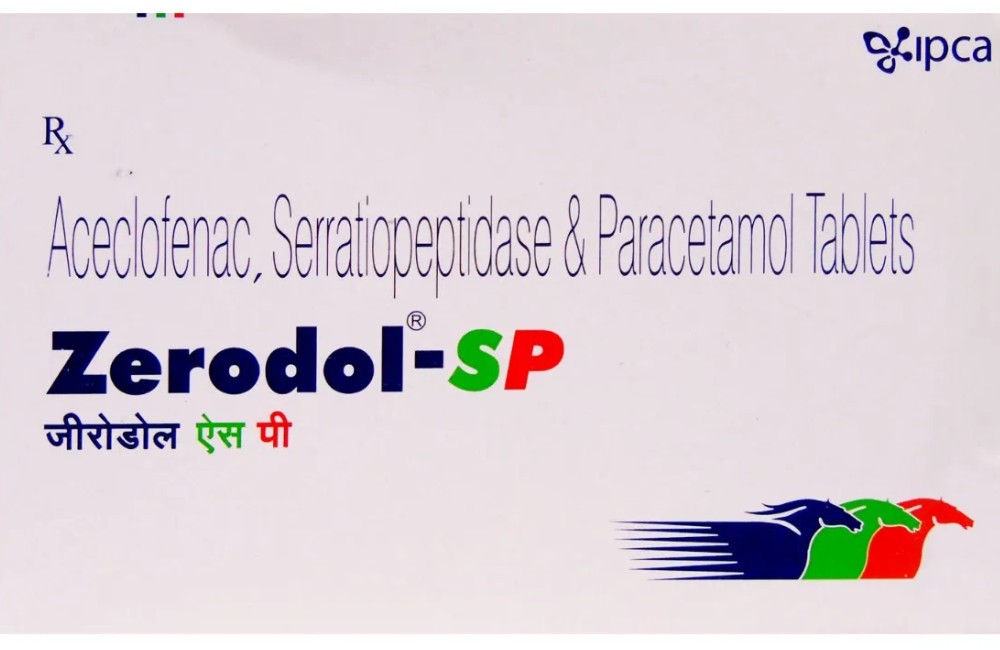Exploring the Mysteries of Blood Clots in the Brain

Welcome to a journey into the intricate realm of blood clots in the brain. Imagine your brain as a bustling metropolis with neural highways and pathways traversing through its intricate landscape. Now, picture a roadblock suddenly appearing, disrupting the normal flow of traffic. This roadblock, in the form of a blood clot, can have severe consequences for your brain’s health.
In this article, we will dive deep into the topic of blood clots in the brain, exploring their causes, symptoms, and potential complications. We’ll equip you with knowledge to recognize the warning signs and provide essential tips for prevention and treatment.
So, fasten your seatbelt and get ready for an eye-opening exploration of the enigmatic world of blood clots in the brain!
Table of Contents
ToggleWhat are Blood Clots?
A. Definition and Formation of Blood Clots
Blood clots are natural responses by the body to prevent excessive bleeding. When a blood vessel is injured, platelets rush to the site to form a clot, staunching the flow of blood. In the brain, however, this process becomes a delicate balance. While necessary to prevent hemorrhage, an unwanted blood clot can obstruct blood flow and oxygen delivery to brain cells, leading to dire consequences.
B. Types of Blood Clots
There are two main types of blood clots that can affect the brain:
Arterial Blood Clots: Arising from arteries, these clots commonly result from atherosclerosis, a condition where fatty deposits accumulate on artery walls, narrowing the vessel and promoting clot formation.
Venous Blood Clots: Developing in the brain’s veins, these clots may occur due to factors like trauma, inflammation, or blood disorders.
Understanding Blood Clots in the Brain
A. How Blood Clots Form in the Brain
The brain’s circulatory system is a remarkable network of blood vessels. When a clot forms in one of these vessels, it can cause an ischemic stroke, depriving a specific area of the brain of oxygen and nutrients. Understanding the mechanisms of clot formation helps in developing prevention and treatment strategies.
B. Difference Between Arterial and Venous Clots
Arterial and venous blood clots possess distinct characteristics. Arterial clots tend to be rich in platelets and fibrin, while venous clots primarily consist of fibrin and red blood cells. These differences play a crucial role in diagnosis and treatment approaches.
C. Causes and Risk Factors
Several factors contribute to the formation of blood clots in the brain. Age, family history, and medical conditions like hypertension, diabetes, and heart disease increase the risk. Lifestyle choices such as smoking, a sedentary lifestyle, and an unhealthy diet also play a significant role.
Unmasking the Symptoms
A. Identifying Common Symptoms of a Blood Clot in the Brain
Recognizing the signs of a brain blood clot is vital for seeking immediate medical attention. Common symptoms include sudden severe headaches, slurred speech, numbness or weakness on one side of the body, vision disturbances, and difficulty walking.
B. Recognizing the Warning Signs
Brain blood clots demand swift action. Understanding the warning signs allows individuals and their loved ones to take prompt action, potentially saving lives and preventing further complications.
The Silent Threat: Asymptomatic Blood Clots
A. What are Asymptomatic Blood Clots?
Not all blood clots in the brain present with overt symptoms. Asymptomatic blood clots silently lurk, with individuals unaware of their presence until a potentially severe event occurs.
B. Long-Term Risks and Complications
Asymptomatic blood clots can have long-term consequences, including recurrent strokes, cognitive impairments, and other neurological issues. Regular medical check-ups and awareness are crucial to detect and manage these hidden threats.
Diagnostic Procedures
A. Imaging Tests for Detecting Blood Clots in the Brain
Various imaging techniques help healthcare professionals visualize blood clots in the brain. CT scans, MRIs, and cerebral angiography aid in accurate diagnosis and treatment planning.
B. Challenges in Diagnosing Brain Blood Clots
Diagnosing blood clots in the brain can be challenging due to their varying symptoms and resemblance to other neurological conditions. Doctors rely on a combination of clinical assessment and imaging studies for a precise diagnosis.
Navigating the Dangers: Complications of Blood Clots in the Brain
A. Ischemic Stroke and Its Impact
When a blood clot blocks a blood vessel in the brain, an ischemic stroke occurs. The lack of oxygen and nutrients can lead to brain tissue damage, causing a wide range of physical and cognitive impairments.
B. Hemorrhagic Stroke: The Danger of Ruptured Blood Vessels
In some cases, blood clots can lead to a hemorrhagic stroke, where a blood vessel ruptures, causing bleeding within or around the brain. This type of stroke requires immediate emergency medical attention due to its life-threatening nature.
Preventive Measures
A. Lifestyle Changes to Reduce the Risk of Brain Blood Clots
Adopting a healthy lifestyle can significantly lower the risk of blood clots in the brain. Regular exercise, a balanced diet, maintaining a healthy weight, and avoiding smoking and excessive alcohol consumption are vital preventive measures.
B. Medical Interventions for Prevention
Individuals at high risk of brain blood clots may require medical interventions, such as anticoagulant medications or antiplatelet therapy, to prevent clot formation. However, these interventions should always be monitored by healthcare professionals to minimize potential side effects.
Treatment Options
A. Immediate Medical Response for Acute Blood Clots
When a person presents with symptoms of a brain blood clot, immediate medical attention is crucial. Timely treatment with clot-busting medications or mechanical thrombectomy can potentially reverse the damage and improve outcomes.
B. Anticoagulants and Their Role
Anticoagulant medications, such as warfarin or direct oral anticoagulants (DOACs), are commonly prescribed to prevent and treat blood clots in the brain. These medications interfere with the blood’s ability to clot, reducing the risk of further complications.
Life After a Brain Blood Clot
A. Recovery and Rehabilitation
Recovery after a brain blood clot can be a challenging journey. Rehabilitation, including physical therapy, occupational therapy, and speech therapy, plays a crucial role in regaining lost functions and improving quality of life.
B. Coping with Potential After-Effects
Individuals who have experienced brain blood clots may face long-term after-effects, such as memory problems, difficulty concentrating, or emotional changes. Support from healthcare professionals, family, and support groups can help them adapt to these changes.
Future Perspectives: Advancements in Brain Blood Clot Research
A. Promising Areas of Research and Development
The medical community continues to advance research on brain blood clots, seeking more effective treatments and prevention strategies. From novel medications to innovative surgical techniques, ongoing research offers hope for better outcomes.
B. Potential Breakthroughs and Treatments on the Horizon
Emerging treatments, such as targeted therapies and gene therapies, hold promise in tackling brain blood clots with greater precision and efficacy. These potential breakthroughs may revolutionize the management of brain blood clots in the future.
Personal Stories: Survivors’ Tales
A. Inspiring Stories of Individuals Who Overcame Brain Blood Clots
Survivors of brain blood clots have remarkable stories of resilience and determination. Their firsthand accounts shed light on the challenges they faced and the strength they discovered within themselves.
B. Lessons Learned from Their Experiences
Learning from the experiences of survivors provides valuable insights into coping with brain blood clots. These lessons serve as inspiration for others facing similar challenges.
Spreading Awareness
A. The Importance of Raising Awareness about Brain Blood Clots
Raising awareness about brain blood clots is crucial in encouraging early detection, prompt treatment, and preventive measures. Education empowers individuals to take charge of their brain health.
B. Advocacy and Support Groups
Advocacy efforts and support groups play a vital role in connecting individuals affected by brain blood clots, fostering a sense of community, and providing resources for better care and understanding.
Conclusion
Unraveling the mysteries of blood clots in the brain has taken us on an insightful and enlightening journey. The brain’s intricate web of blood vessels can be both vulnerable and resilient, and understanding the risks and warning signs of brain blood clots is vital in protecting its well-being.
From the silent threats of asymptomatic blood clots to the life-altering consequences of strokes, knowledge empowers us to take charge of our brain health. By embracing healthy lifestyle choices, seeking medical guidance, and being vigilant about potential symptoms, we can navigate this enigmatic landscape with confidence.
As medical research progresses and breakthroughs offer new hope, let us stand united in spreading awareness and advocating for better brain health care. Together, we can unlock the enigma of blood clots in the brain, ensuring a brighter and healthier future for ourselves and our loved ones.
FAQ’s
Brain blood clots can be influenced by various risk factors, including age, family history of clotting disorders, hypertension, smoking, obesity, sedentary lifestyle, and certain medical conditions like diabetes and heart disease. Understanding these risk factors can help individuals take proactive steps to minimize their risk.
While stress and anxiety don’t directly cause blood clots, they can contribute indirectly. Prolonged stress can lead to unhealthy lifestyle habits, such as poor diet and lack of exercise, which in turn increase the risk of developing blood clots. Managing stress through relaxation techniques and seeking emotional support can play a role in reducing overall risk.
While certain natural remedies and lifestyle changes may have some positive impact on overall cardiovascular health, it’s crucial to remember that brain blood clots are serious medical conditions that require professional evaluation and management. Always consult with a healthcare provider before relying solely on natural remedies.
Recovery from a brain blood clot can vary significantly depending on the severity of the clot, the area of the brain affected, and the individual’s overall health. Rehabilitation and recovery can take weeks to months, and some individuals may experience long-term effects. Each person’s journey is unique, and the recovery process is best guided by a healthcare team.
While genetics can play a role in predisposing individuals to certain conditions that may increase the risk of blood clots, brain blood clots themselves are not directly hereditary. However, if you have a family history of clotting disorders, it’s essential to inform your healthcare provider to assess your individual risk.
Note: Remember, it’s always a good idea to consult a healthcare professional or registered dietitian before making significant changes to your diet, especially if you have any underlying health conditions or specific dietary requirements.
Book an Appointment
Recent Articles
-
 Full Body Checkup: A Complete Test List for Optimal Health02 Nov 2023
Full Body Checkup: A Complete Test List for Optimal Health02 Nov 2023 -
 Zerodol-SP Tablet: Power of Pain Relief and Inflammation Control30 Jun 2023
Zerodol-SP Tablet: Power of Pain Relief and Inflammation Control30 Jun 2023 -
 Glycerin for Face: A Game-Changer in Skincare?01 Sep 2023
Glycerin for Face: A Game-Changer in Skincare?01 Sep 2023 -
 7 Hacks to Lower Prolactin Levels Naturally27 Sep 2023
7 Hacks to Lower Prolactin Levels Naturally27 Sep 2023 -
 The Incredible Benefits of Eating Walnuts: Boosting Your Health One Nut at a Time29 Jun 2023
The Incredible Benefits of Eating Walnuts: Boosting Your Health One Nut at a Time29 Jun 2023

